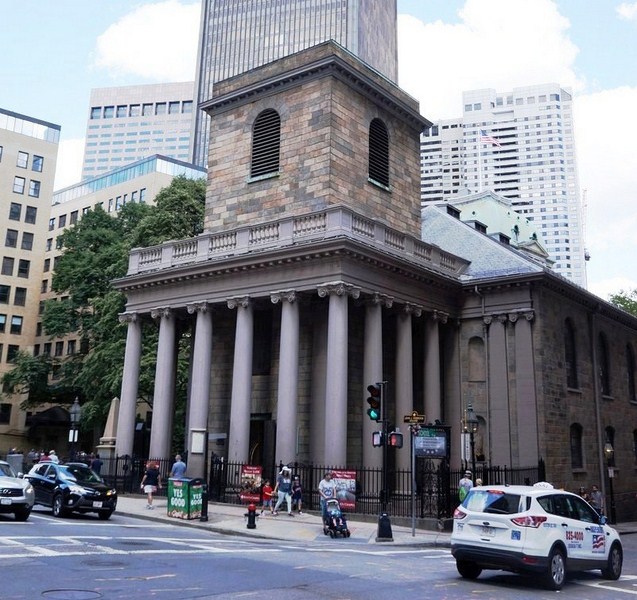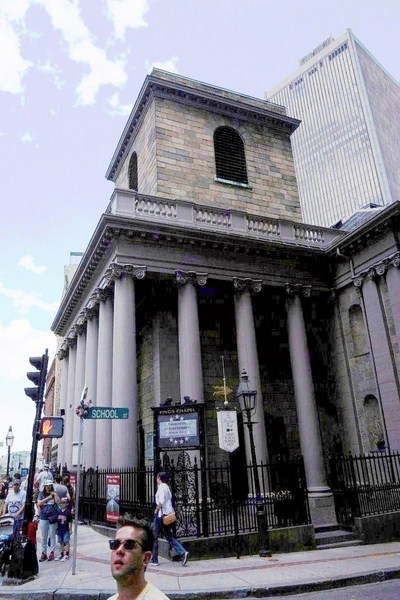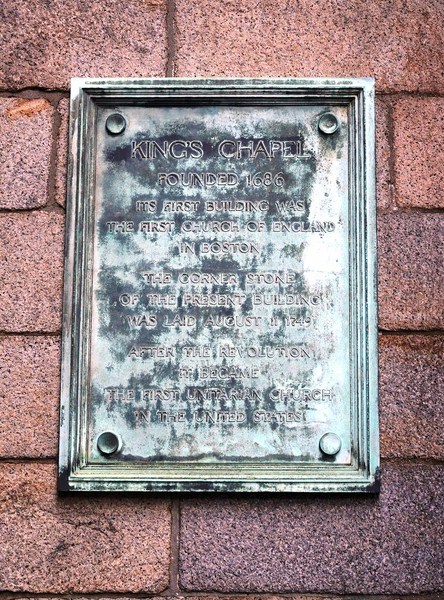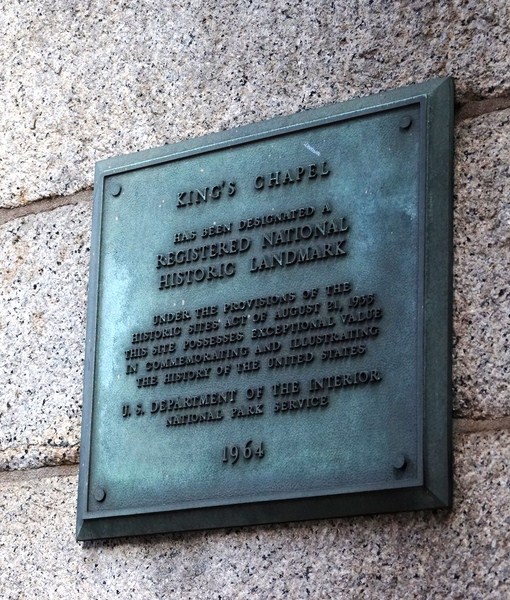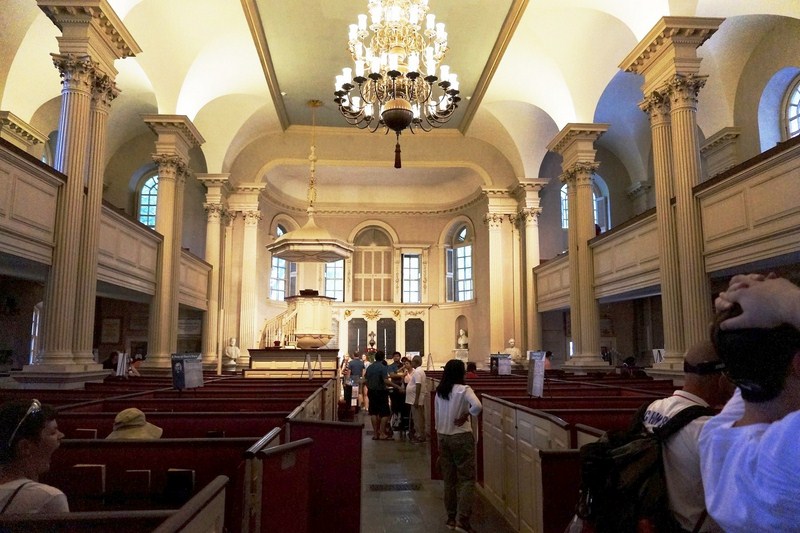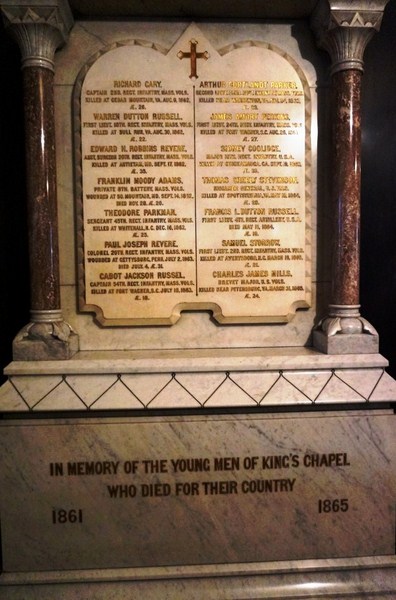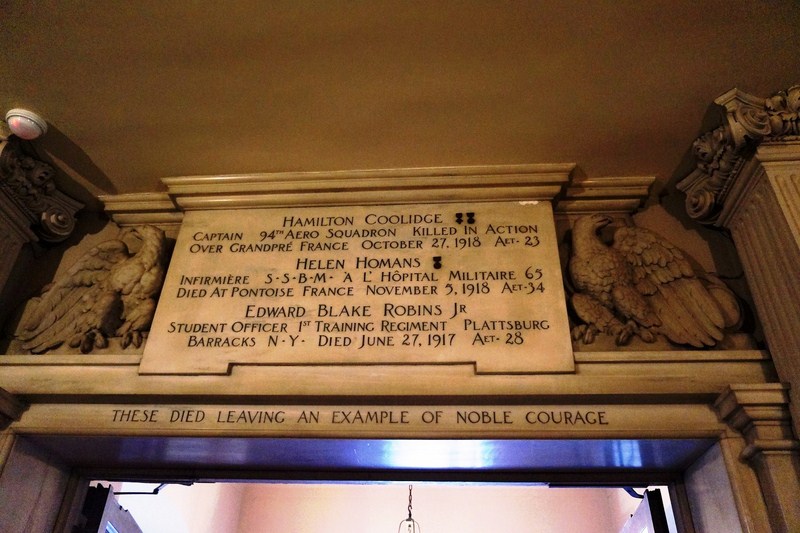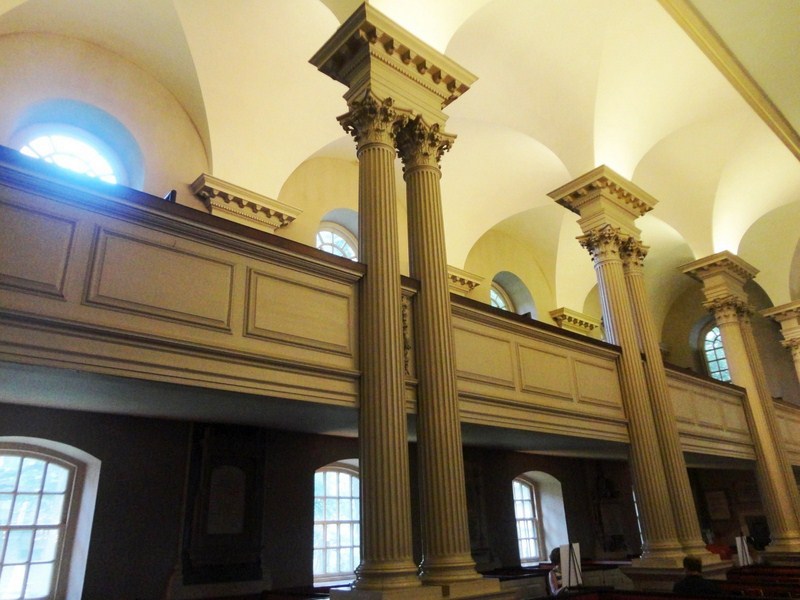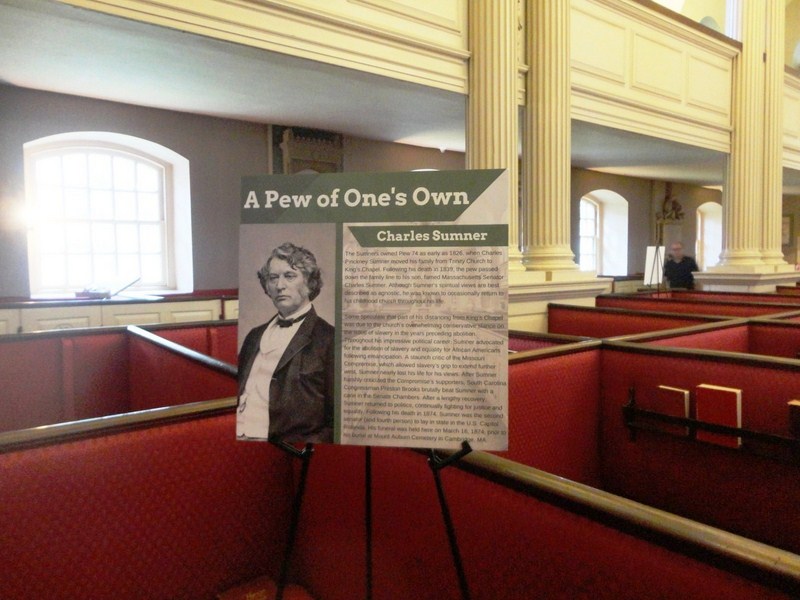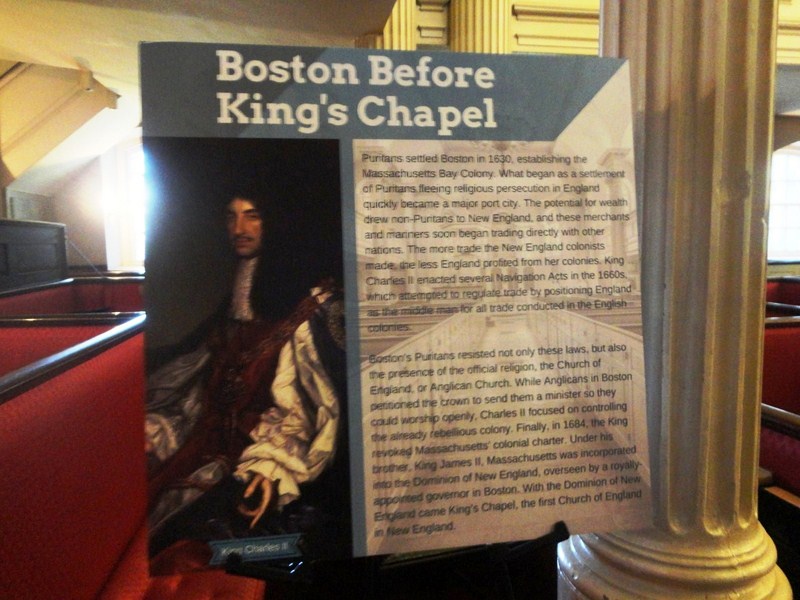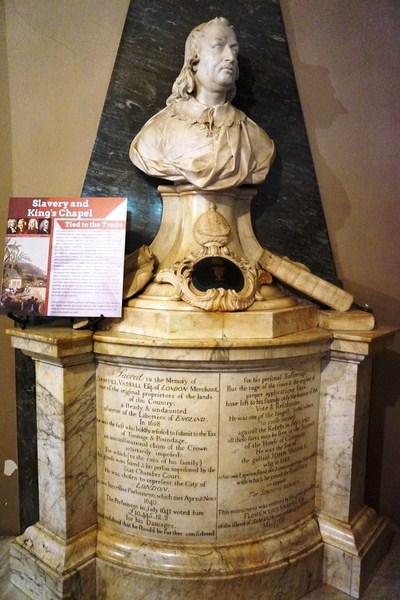The King’s Chapel, proudly one of the 16 historic sites (the fifth stop) on Boston’s Freedom Trail, is housed in what was formerly called the “Stone Chapel,” an 18th-century structure. The chapel, an independent Christian unitarian congregation affiliated with the Unitarian Universalist Association and the first Anglican church in colonial New England and overwhelmingly Puritan Boston, was founded on June 15, 1686 by Royal Governor Sir Edmund Andros during the reign of King James II. Notable members and attendees included George Washington, Paul Revere, Thomas Hutchinson, Charles Sumner, Charles Bulfinch, Oliver Wendell Holmes and many more.
Check out “Freedom Trail“
The chapel was originally a wooden church built in 1688. The present larger stone (made with Quincy granite) chapel building, started in 1749 (its cornerstone was laid on August 11) and completed in 1754, was built around the wooden church.
One of the finest designs of the noted colonial architect Peter Harrison (dubbed as “America’s first architect”) of Newport, when the stone church was completed, the wooden church was disassembled, removed through the windows of the new church and the wood shipped to Lunenburg, Nova Scotia where it was used to construct St. John’s Anglican Church.
During the American Revolution, the chapel sat vacant or a few short months as Loyalist families left for Nova Scotia and England, but reopened, following the loss of its minister (the Rev. Henry Caner), for the funeral of Gen. Joseph Warren who was killed at the Battle of Bunker Hill (June 17, 1775). In 1782, those who remained reopened the church. In 1960, the chapel was designated a National Historic Landmark for its architectural significance. On Halloween night of 2001, the church was destroyed by fire but has since been rebuilt.
The chapel bell, cast in England and hung in 1772, cracked in 1814 and was recast by Paul Revere (the largest bell cast by the Revere foundry and the last one cast by Paul Revere himself) and rehung. Ever since, it has been rung during Sunday morning services.
The exterior columns of the colonnade (completed after the American Revolution), which appear to be stone, are, in fact, wood painted in a cost-saving trompe-l’oeil.
The magnificent interior, considered the finest example of Georgian church architecture in North America, features wooden columns which have Corinthian capitals hand-carved, in 1758, by William Burbeck and his apprentices.
The current uniform appearance of the seating, in box pews, dates from the 1920s. The pews were mostly originally owned by the member families who paid pew rent and decorated the pews according to their personal tastes.
The chapel first organ was acquired in 1723. The present organ, the chapel’s sixth, was built by C.B. Fisk in in 1964. Decorated with miters and carvings from the Bridge organ of 1756, it is slightly below average in size compared with most mid-1900s European chapel organs.
Within the King’s Chapel is a monument to London merchant Samuel Vassall, brother of the colonist William Vassall (who frequently clashed with John Winthrop, and eventually removed himself to Scituate, Massachusetts), a patentee of the Massachusetts Bay Company (also named a member of the company in its 1629 Royal Charter), an early deputy of the Massachusetts Bay Colony and a Member of Parliament (1640–1641) representing London.
Kings Chapel: 58 Tremont Street cor. School Street, Boston, Massachusetts, MA 02108, U.S.A. Open daily, 10 AM – 4:30 PM. Tours: 10 AM to 5 PM, Mondays through Saturdays; and 1:30 PM to 5 PM on Sundays. Tel:+1 617-523-1749. Website: www.kings-chapel.org.

